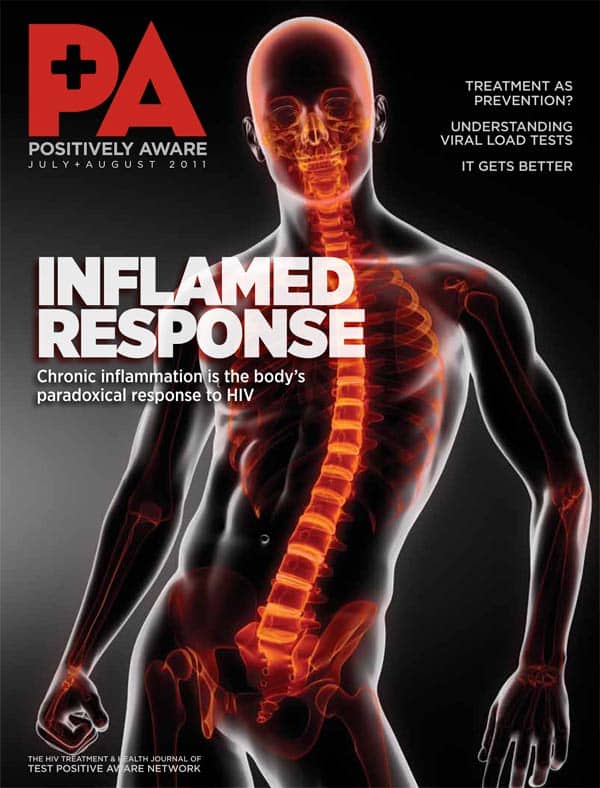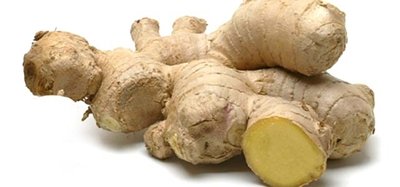Six Simple Solutions to Rid Yourself of Inflammation

It’s hard to beat inflammation. As we age, most of us get more of it, and chronic inflammation is a known precursor to many age-related, debilitating diseases. Here are your tried and true solutions to inflammation.
 CHRONIC INFLAMMATION is an underlying cause of many seemingly unrelated chronic diseases that typically befall humans as we age.
CHRONIC INFLAMMATION is an underlying cause of many seemingly unrelated chronic diseases that typically befall humans as we age.
Are your joints often stiff or swollen, but not related to a specific injury that happened recently? Are you achy? You may be suffering from chronic, persistent inflammation.
Seems that I am.
In the post, My Blood Sugar Numbers Confound Me, I describe my blood testing predilections, and my surprise at some recent dolorous test results. For a health nut like me who seemingly does most everything right in support of my health, that last blood test panel seems to say, “au contraire, monsieur”.
Since then, I’ve been applying myself to understanding what the seminal cause might be behind my litany of issues as noted by my blood test; namely:
- High fasting blood sugar,
- Low thyroid function,
- High VLDL-3 (small remnant),
- LDL Density Pattern B (abnormal),
- Low HDL-2, and
- High C-reactive Protein, Cardiac, the subject of this post.
So far, I’ve tackled the high blood sugar number, and am happy to report that it’s steadily falling, the details about which will be the subject of a future post.
The focus today is this high inflammation of mine, which is indicated by something called, “High C-reactive Protein, Cardiac (“CRP”).
If you are consistently achy and/or have swollen joints, let this post assist you in rectifying the problem.
Chronic Inflammation Is the Foundation for Disease
According to WebMD’s Heart Disease Health Center, our bodies produce CRP when there’s inflammation, and thus CRP becomes a marker for indicating its presence.
That “cardiac” part is appended to the CRP terminology because CRP levels are correlated with as much as a three-fold increase in heart disease risk. But heart disease is hardly the only pernicious disease potentially lurking around the corner when you have chronic inflammation.
The Life Extension Foundation reports that chronic inflammation is also involved in diseases as diverse as atherosclerosis, cancer, heart valve dysfunction, obesity, diabetes, congestive heart failure, digestive system diseases, Alzheimer’s disease, etc.
Here’s their chart on the matter:
Diseases Related To Chronic Inflammation
|
|
| Disease | Mechanism |
| Allergy | Inflammatory cytokines induce autoimmune reactions |
| Alzheimer’s | Chronic inflammation destroys brain cells |
| Anemia | Inflammatory cytokines attack erythropoietin production |
| Aortic valve stenosis | Chronic inflammation damages heart valves |
| Arthritis | Inflammatory cytokines destroy joint cartilage and synovial fluid |
| Cancer | Chronic inflammation causes many cancers |
| Congestive heart failure | Chronic inflammation contributes to heart muscle wasting |
| Fibromyalgia | Inflammatory cytokines are elevated |
| Fibrosis | Inflammatory cytokines attack traumatized tissue |
| Heart attack | Chronic inflammation contributes to coronary atherosclerosis |
| Kidney failure | Inflammatory cytokines restrict circulation and damage nephrons |
| Lupus | Inflammatory cytokines induce an autoimmune attack |
| Pancreatitis | Inflammatory cytokines induce pancreatic cell injury |
| Psoriasis | Inflammatory cytokines induce dermatitis |
| Stroke | Chronic inflammation promoted thromboembolic events |
| Surgical complications | Inflammatory cytokines prevent healing |
(Source)
It’s looking like there’s some room here for concern.
Here’s the CRP reference range, low to high:
Here’s my test result, as cut and pasted from my Life Extension blood test panel:
(Click to enlarge)
As you can see, my score of 3.74 mg/L (milligrams per liter) is high, and needs fixing, even if I don’t possess other risk factors for heart disease, such as:
- A previous heart attack or stroke.
- A family history of heart disease.
- Elevated total and LDL cholesterol levels.
- Low HDL level.
- High blood pressure.
- Being male or a post-menopausal woman.
- Cigarette smoker.
- Uncontrolled diabetes or high blood pressure.
- Physical inactivity.
- Obesity or being overweight. (Source)
A Lifestyle Change Is The First Step
If you have chronic inflammation and also have one or more of the above risk factors, you need to get your inflammation under control, starting with lifestyle changes like these:
- Eating a heart-healthy diet.
- Reducing high cholesterol levels.
- Maintaining a healthy weight.
- Exercising regularly.
- Managing diabetes and high blood pressure.
- Quitting smoking or tobacco use.
- Drinking less alcohol.
That said, the above list describes my situation, and yet, as duly noted, ad nauseum, I still seem to have chronic inflammation.
The only places I feel it are in my wrists and one Achilles tendon, but the High C-reactive Protein number seems to leave all self-delusion behind.
So, dear reader, if you’re doing everything right and yet still have a condition that by doing everything right you should not have, what do you do?
Read on…
I’ll put it in a nutshell of sorts. My diet is already highly anti-inflammatory, given its close approximation Dr. Andrew Weil’s anti-inflammatory diet, which basically looks like this, as enumerated by NaturalNews.com here:
• Dominated by plant-based foods
• Fresh produce at every meal
• No processed foods (made in a factory)
• No fried foods, no cheap oils
• Lots of cold-refined, extra virgin olive oil
• Lots of avocados, fresh tomatoes, cucumbers, etc.
• Drink fresh vegetable juice daily (juice it yourself!)
• The best anti-inflammatory juices are cucumber and celery
• Lots of superfoods (berries, sprouts, etc.)
• Green tea and water as your beverages
• Lots of raw walnuts, pecans and other nuts
But what I can do more of is to add specific, anti-inflammatory supplements.
Yeah, me supplement… go figure.
Well, it’s not my answer to everything that ails you, but I admit that I often turn to some remedy that includes supplementation, and I will again as I seek to conquer my inflammation issue.
My Inflammation-beating Regime
Here’s six things I’m going to do:
- Ingest 6 grams of MSM daily, 3 morning, 3 evening
- Increase my consumption of Astaxanthin from 4 to 8 mgs/day, 1 softgel in the morning, 1 at night
- Start taking Zyflamend again, and take 2x the suggested dose of 2 softgels (2 morning, 2 might)
- Increase my consumption of ginger root, from 5 once per day to 10 grams, twice, juiced or blended
- Apply DMSO to my wrists and Achilles tendon
- Apply Dr. Shulze’s Deep Tissue Oil to my wrists and Achilles tendon along with the DMSO
Here’s why:
– As Drs. Mercola and Benjamin discuss in the video below, MSM (methylsulfonylmethane), a beneficial form of sulfur, is well known for its joint health benefits, but may also be helpful for other conditions related to chronic inflammation and damage due to oxidation. There are two methods of purifying MSM: Distillation and Crystallization. Although crystallization is cheaper, the distillation process is far superior, and is highly recommended.
– DMSO (dimethyl sulfoxide) is a highly penetrating solvent from which MSM is a metabolite. (Approximately 15 percent of any DMSO dosage, on average, converts to MSM in the human body.) It comes as a gel, often combined with aloe vera, and is topically applied on a joint or body part that’s sore or inflamed, but not sensitive to heat, as DMSO can warm your skin.
– Astaxanthin is a powerful anti-inflammatory supplement derived from microalgae and various fish and crustaceans. It has 100-500 times the antioxidant capacity of Vitamin E, and 10 times the antioxidant capacity of beta-carotene. (Source)
– Zyflamend is a propriety formulae made by New Chapter designed to reduce inflammation, consisting of Turmeric, Ginger, Holy Basil, Green Tea, Rosemary, and Oregano, among other herbs. It may have synergistic inflammation-reducing qualities when taken with Astaxanthin.
– Dr. Schulze’s Deep Tissue Oil contains a bounty of high quality, minimally processed herbs that sooth muscles and increases circulation, such as wintergreen oil, botanical menthol, habanero pepper, arnica flower, etc.
– Ginger Root helps with a lot of health issues, such as digestive stress, intestinal gas, seasickness, but the focus here is its usefulness for reducing inflammation. Ginger root possesses compounds called gingerols, and many people with osteoarthritis or rheumatoid arthritis experience reductions in their pain levels and improvements in their mobility when they consume ginger regularly.
-> I’ll put pics and links to these products below.
Watch this video of Drs. Joe Mercola and Rod Benjamin extolling the virtues of MSM and DMSO, and then go read some more details at Dr. Mercola’s site. These are the sources that reminded me about the potential effectiveness of MSM and DMSO, both of which I’ve used in the past.
Besides focusing on an anti-inflammatory diet and the supplements, etc. mentioned, I’m also stretching and doing mobility exercises.
I do mobility exercises every morning for just 12 minutes, and find that this practice makes the whole day feel better. You check out how Mike Mahler does his, but know that you can get substantial benefits with fewer exercises done in less time, so choose those that you need, not necessarily those that immediately feel the best.
Yoga is done twice per week. (More is better.) Sometimes I incorporate dumb bells with the asanas, a practice my friends have called, “Garmanetics”. (I made up the spelling for it read as it sounds, but I think what my buddies are getting at by the “netics” part is to reference the word, “kinetics”, meaning “movement” or “to move”.)
Check out Jill Miller’s quick, effective, inexpensive tune-up yoga videos here.
MSM, DMSO and Other Products Mentioned
MSM
Earlier in the year, I was taking an MSM powder marketed for horses. No kidding. If you were to read up about MSM, you’d find that it has been liberally used for race horses and is found to be quite effective. The stuff marketed to horse owners is chemically the same stuff as that marketed to humans, but cheaper. That said, it’s also most likely purified via crystallization rather than distillation, the preferred method as reviewed above. This is what I just ordered from Amazon.com:
If you watched the video above with Drs. Mercola and Benjamin, you may have heard them mention OptiMSM as a preferred source for distilled MSM.
DMSO
This is the very same DMSO that’s in my bathroom closet that I apply liberally along with Dr. Schultze’s Deep Tissue Oil on any body part that’s sore long enough to bug me.
Astaxanthin
This is the one I use for no particular reason:
Zyflamend
You can get Zyflamend at many health food stores, at the New Chapter website, at ProHealth.com or, naturally, at Amazon.com, the link to which is here:
Dr. Schulze’s Deep Tissue Oil
There doesn’t seem to be a direct link to this product that I can share here, but if you go here and scroll down the left hand side column showing products, you’ll find “Deep Tissue Oil”. Also looked on Amazon but didn’t find it there.
Ginger Root
This is what ginger root looks like:
Buy it at most grocery stores. Then break off a bit and add it to your juicing regimen, or put it a blender with whatever else you’re blending. Start with a pinky nail’s worth and then go large as you become accustomed to it.
OK, that’s it from me… now it’s your turn to share in the Comments below anything that you’ve done that has reduced your inflammation. Or whatever.
Over and out.
P.S. If you’d like to go deeper into this topic of inflammation, read 8 Risk Factors For Inflammation and What To Do About It.
Last Updated on February 25, 2024 by Joe Garma





